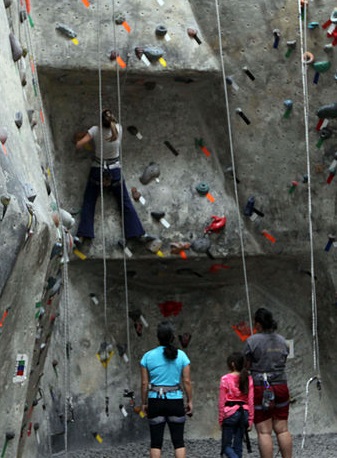As though rock climbing weren’t exciting enough, AR is now being used to turn it into a kind of video game.
Indoor climbing company, Brooklyn Boulders, has now launched a new type of augmented reality experience that allows its customers to turn their regular bouldering challenges into an entirely new competitive video game experience.
The sport of indoor rock climbing has been spiking in popularity and businesses are working to stand out.
As climbing gyms start to appear all across the United States, it is reaching the point that these companies are starting to need to work to allow themselves to stand out from the competition. In this effort, Brooklyn Boulders – located in New York City – has become the first in this industry to implement an augmented reality technology based game on their bouldering wall. The hope is that by adding a lit up, competitive game experience similar to video gaming, it will help to make this sport even more appealing and will draw people specifically into their location.
The augmented reality climbing game experience was first created by John Cheng and is called Time Trial.
 Time Trial is a form of digital AR climbing game from the Randori startup. The game works by projecting numbered circles next to the hand hold positions on the various climbing walls. When a climber touches those circles, he or she gains points. The purpose of the game is to be able to collect all the available points throughout the length of a climb. Moreover, the climber must complete the bouldering challenge within the shortest time possible.
Time Trial is a form of digital AR climbing game from the Randori startup. The game works by projecting numbered circles next to the hand hold positions on the various climbing walls. When a climber touches those circles, he or she gains points. The purpose of the game is to be able to collect all the available points throughout the length of a climb. Moreover, the climber must complete the bouldering challenge within the shortest time possible.
In order to run the Time Trial system, the equipment needed includes a laptop to run the program, a camera sensor, and projectors. Cheng, a former student of computer science, is a Brooklyn Boulders member and originally demoed his AR game, last year. Since it was first showcased, Time Trial has gone through additional evolution as it can now display the scores and times of the climber on the wall next to the number targets.
Cheng is now working to implement the augmented reality climbing experience at locations outside of Brooklyn Boulders and is currently looking into opportunities in Queensbridge and Chicago.

